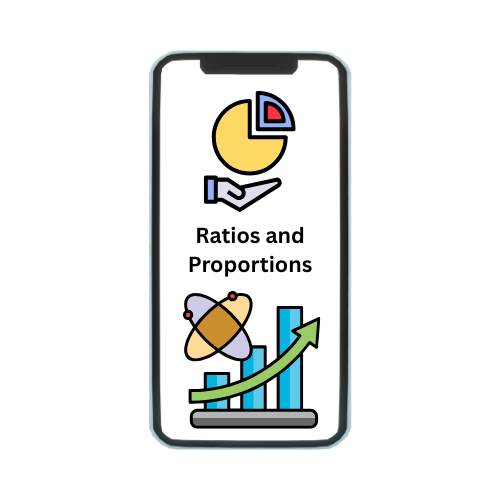In the realm of finance, understanding the concept of financial structure is paramount for businesses striving to succeed in today’s competitive landscape. Financial structure refers to the combination of debt and equity that a company uses to finance its operations and growth initiatives. It is a fundamental aspect of financial management, influencing a company’s stability, growth potential, and ability to weather economic uncertainties. By carefully balancing debt and equity, companies can optimize their cost of capital, enhance financial flexibility, and attract investors and creditors. This article explores the importance of financial structure, its key components, advantages, impacts on cost of capital, factors to consider when determining it, risks associated with different types, and concludes with insights crucial for navigating the complexities of modern business finance.
What Is Financial Structure?
Financial structure refers to the way in which a company finances its operations and growth through a combination of equity (ownership) and debt (borrowed funds). It represents the composition of a company’s capital, determining how it funds its assets, operations, and future expansion. A company’s financial structure is crucial as it defines its overall financial health and stability. By leveraging debt and equity in different proportions, companies can manage their financial obligations, optimize their cost of capital, and achieve a balance between risk and return. Essentially, the financial structure of a business influences its ability to attract investors and creditors, as well as its capacity to sustain growth and navigate economic fluctuations effectively.
Why Is Financial Structure Important For A Business?
Financial structure is crucial for businesses for several reasons:
- Stability and Solvency: A well-planned financial structure ensures that a business can meet its financial obligations consistently, maintaining stability even during economic downturns.
- Supports Growth and Expansion: By defining how a company will finance its growth, a strong financial structure enables it to expand operations, enter new markets, and invest in innovation.
- Attracts Investors and Creditors: Investors and creditors assess a company’s financial structure to determine its creditworthiness and risk level, influencing its ability to attract funding at favorable terms.
- Optimizes Cost of Capital: Balancing debt and equity in the financial structure helps companies optimize their cost of capital, reducing the overall expense of financing operations and growth initiatives.
- Enhances Financial Flexibility: A well-structured financial plan provides flexibility in managing cash flow, debt repayment, and capital investments, adapting to changing market conditions.
- Improves Credit Rating: Maintaining a strong financial structure enhances a company’s creditworthiness, enabling access to additional funding at competitive rates and terms.
- Strategic Decision Making: The financial structure impacts strategic decision-making processes, influencing capital allocation, dividend policies, and mergers and acquisitions.
- Risk Management: It helps in managing financial risks associated with different types of financing, such as interest rate risk, liquidity risk, and financial leverage risk.
- Compliance and Reporting: It ensures compliance with financial regulations and reporting requirements, enhancing transparency and accountability to stakeholders.
What Are The Key Components Of Financial Structure?
The key components of financial structure include:
- Debt Financing: Debt financing involves raising capital by borrowing money, which must be repaid over time with interest. Companies typically use bonds, loans, or lines of credit to finance their operations and investments. Debt financing provides leverage and allows companies to benefit from tax deductions on interest payments.
- Equity Financing: Equity financing involves raising capital by selling shares of ownership in the company to investors. This provides funds without the obligation of repayment and allows companies to share ownership and control. Equity financing can include common stock, preferred stock, or other equity instruments.
- Hybrid Financing: Hybrid financing combines elements of both debt and equity financing. Examples include convertible debt, which starts as debt but can be converted into equity, and preferred stock, which has characteristics of both debt and equity. Hybrid financing offers flexibility in managing financial obligations and capital structure.
- Retained Earnings: Retained earnings represent the portion of net earnings that a company retains rather than distributing as dividends. It is an internal source of financing that supports growth and expansion without incurring additional debt or diluting ownership.
- Short-term vs. Long-term Financing: Financial structure also considers the mix of short-term and long-term financing. Short-term financing includes accounts payable, accruals, and short-term loans, while long-term financing includes bonds, mortgages, and long-term loans. Balancing short-term and long-term financing helps manage liquidity and financial obligations.
What Are The Advantages Of Having A Strong Financial Structure?
Having a strong financial structure offers several advantages to a business:
- Lower Cost of Capital: A well-balanced financial structure allows businesses to optimize their cost of capital by using an appropriate mix of debt and equity. Debt financing tends to be cheaper due to tax advantages, while equity financing can provide flexibility and lower financial risk. By managing these components effectively, businesses can reduce their overall cost of capital, making investments more affordable and profitable.
- Enhanced Financial Flexibility: A strong financial structure provides businesses with the flexibility to manage cash flows, debt repayment schedules, and capital investments. This flexibility allows businesses to adapt to changing market conditions, economic downturns, or unexpected expenses without compromising their operations or growth plans.
- Improved Credit Rating: Maintaining a strong financial structure enhances a company’s creditworthiness and improves its credit rating. This makes it easier to access additional funding from banks, investors, or financial institutions at favorable interest rates and terms. A higher credit rating also signals stability and reliability to stakeholders, boosting investor confidence and reducing financing costs.
- Supports Growth and Expansion: A robust financial structure supports business growth and expansion initiatives. By securing adequate funding through debt or equity, businesses can invest in new projects, enter new markets, acquire competitors, or innovate products and services. This strategic growth not only increases market share but also enhances profitability and shareholder value.
- Attracts Investors and Stakeholders: A strong financial structure attracts potential investors and stakeholders who are looking for stable and profitable investment opportunities. Investors are more likely to invest in companies with a clear and transparent financial structure that demonstrates sustainable growth and strong financial health. This, in turn, can lead to increased shareholder value and support for future funding needs.
How Does Financial Structure Affect A Company’s Cost Of Capital?
Financial structure plays a crucial role in determining a company’s cost of capital, which is the cost of obtaining funds for financing its operations and investments. The main components of financial structure—debt and equity—impact the cost of capital in different ways:
- Debt Financing and Interest Payments: Debt financing involves borrowing money that must be repaid over time with interest. Interest payments on debt are tax-deductible, which reduces the effective cost of debt. However, higher levels of debt increase financial leverage and the risk of default, which can raise the cost of debt capital due to higher interest rates and increased perceived risk by creditors.
- Equity Financing and Return Expectations: Equity financing involves selling ownership shares in the company to investors, who expect a return on their investment in the form of dividends or capital appreciation. Equity capital does not require repayment like debt, but it comes at a cost—companies must provide higher returns to equity investors to compensate for the higher risk compared to debt holders. This expectation of higher returns increases the cost of equity capital.
- Weighted Average Cost of Capital (WACC): The financial structure determines the proportion of debt and equity in the company’s capital structure. The Weighted Average Cost of Capital (WACC) is the average cost of debt and equity financing weighted by their respective proportions in the capital structure. A higher proportion of debt generally lowers WACC due to the tax shield effect of interest deductions, but it increases financial risk. Conversely, a higher proportion of equity increases WACC due to higher required returns from equity investors.
- Impact on Risk Perception: The financial structure also affects how creditors and investors perceive the risk of the company. A more conservative financial structure with a balanced mix of debt and equity signals financial stability and lower risk, reducing the cost of capital. Conversely, a highly leveraged financial structure with excessive debt can increase perceived risk, raising the cost of capital as creditors demand higher interest rates to compensate for the risk of default.
- Capital Market Conditions: The cost of capital is also influenced by broader capital market conditions, such as prevailing interest rates, market sentiment, and investor risk appetite. These factors interact with a company’s financial structure to determine its cost of capital.
What Factors Should A Company Consider When Determining Its Financial Structure?
When determining its financial structure, a company should consider several factors to ensure optimal balance and alignment with its strategic goals:
- Business Risk and Volatility: Assessing the business risk and market volatility is crucial. Companies operating in stable industries with predictable cash flows may opt for higher leverage through debt financing. In contrast, companies in volatile or cyclical industries may prefer a more conservative approach with a lower proportion of debt to mitigate financial risk.
- Growth Plans and Capital Requirements: Anticipated growth plans and capital requirements play a significant role. Companies planning rapid expansion, large capital expenditures, or acquisitions may need more equity or hybrid financing to support these initiatives without over-leveraging.
- Cost of Capital: Evaluating the cost of different sources of capital—debt and equity—is essential. Debt financing typically offers lower costs due to tax advantages, while equity financing does not involve repayment but requires higher returns to compensate investors for higher risk. Balancing these costs helps in optimizing the overall cost of capital.
- Cash Flow and Liquidity: Considering the company’s cash flow and liquidity position is crucial. A strong cash flow can support debt repayment schedules and interest obligations, reducing financial risk associated with debt. Insufficient cash flow may necessitate more equity financing to maintain liquidity and operational flexibility.
- Tax Implications: Understanding the tax implications of debt and equity financing is important. Interest payments on debt are tax-deductible, reducing the effective cost of debt capital. Companies in higher tax brackets may benefit more from debt financing. Conversely, equity financing does not have tax advantages but does not require repayment, providing flexibility.
What Are The Risks Associated With Different Types Of Financial Structures?
Different types of financial structures come with inherent risks that companies must consider when determining their optimal mix of debt and equity:
- Financial Leverage Risk: High levels of debt increase financial leverage risk. While debt financing offers tax advantages and allows companies to leverage their investments, it also increases the company’s fixed costs in the form of interest payments. During economic downturns or periods of low cash flow, high debt levels can strain financial resources and lead to financial distress or bankruptcy.
- Interest Rate Risk: Debt financing exposes companies to interest rate risk. Fluctuations in interest rates can impact the cost of debt, affecting cash flow and profitability. Rising interest rates increase debt servicing costs, potentially reducing financial flexibility and limiting investment in growth opportunities. Companies with high levels of variable-rate debt are particularly vulnerable to interest rate fluctuations.
- Liquidity Risk: Debt obligations require regular interest and principal payments. Insufficient cash flow or liquidity can lead to difficulties in meeting debt obligations, resulting in default and potential bankruptcy. Maintaining adequate liquidity is crucial to mitigate liquidity risk associated with debt financing.
- Equity Dilution Risk: Equity financing involves issuing shares of ownership in the company to investors. While equity financing does not require repayment like debt, it dilutes existing shareholders’ ownership and control over the company. This can impact decision-making and strategic direction, potentially leading to conflicts of interest between new and existing shareholders.
- Market Risk: Market risk refers to the impact of broader economic and market conditions on a company’s financial structure. Changes in market sentiment, economic downturns, or industry-specific factors can affect the valuation of equity shares and the availability and cost of debt financing. Companies with high levels of market risk may experience volatility in their stock price and financing costs.
- Regulatory Risk: Regulatory changes and compliance requirements can impact a company’s financial structure. Changes in tax laws, accounting standards, or industry regulations may affect the cost and availability of debt financing, as well as the attractiveness of equity investments. Companies must stay informed about regulatory developments and adjust their financial structure accordingly.
- Capital Structure Risk: The composition of a company’s capital structure affects its overall risk profile. Over-reliance on debt financing can increase financial leverage risk, while a high proportion of equity financing can dilute ownership and control. Balancing debt and equity to achieve an optimal capital structure is essential to manage these risks effectively.
- Default Risk: Default risk refers to the risk of not being able to meet debt obligations. Companies with high debt levels or poor financial performance may face increased default risk, leading to credit rating downgrades, higher borrowing costs, and limited access to financing. Maintaining a strong credit rating and adequate debt service coverage ratios is essential to mitigate default risk.
Conclusion
In conclusion, the financial structure of a company is a critical determinant of its financial health, stability, and ability to achieve long-term growth. By carefully balancing debt and equity financing, companies can optimize their cost of capital, enhance financial flexibility, and attract investors and creditors. A strong financial structure supports business operations, mitigates risks, and enables strategic decision-making that aligns with growth objectives. However, it’s essential for companies to carefully consider the risks associated with different financial structures, such as financial leverage, interest rate fluctuations, liquidity challenges, and regulatory changes. By maintaining a well-defined financial structure that is sustainable and aligned with market conditions, companies can navigate economic uncertainties and capitalize on growth opportunities effectively. Overall, a robust financial structure is crucial for businesses to thrive in a competitive market environment and achieve sustainable financial success.







